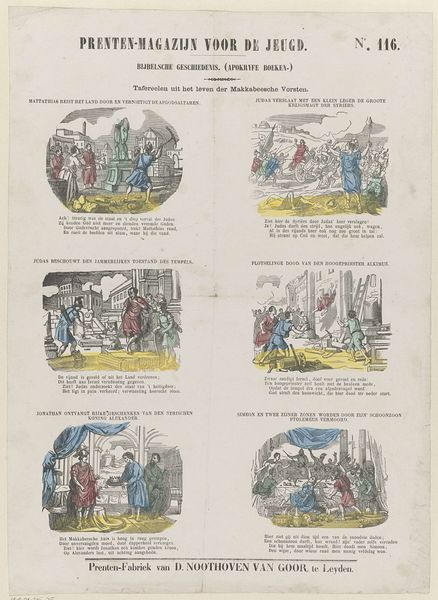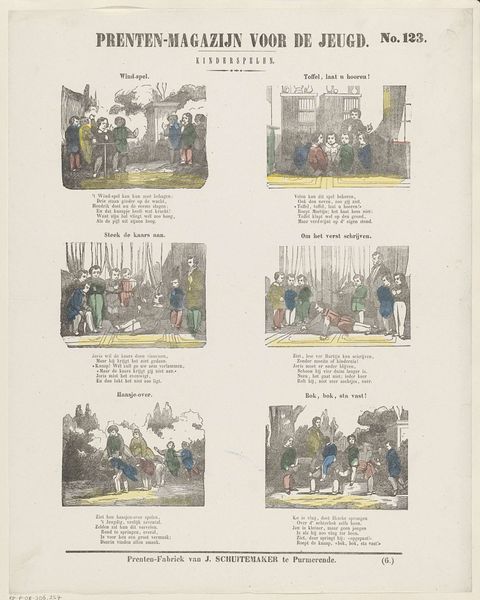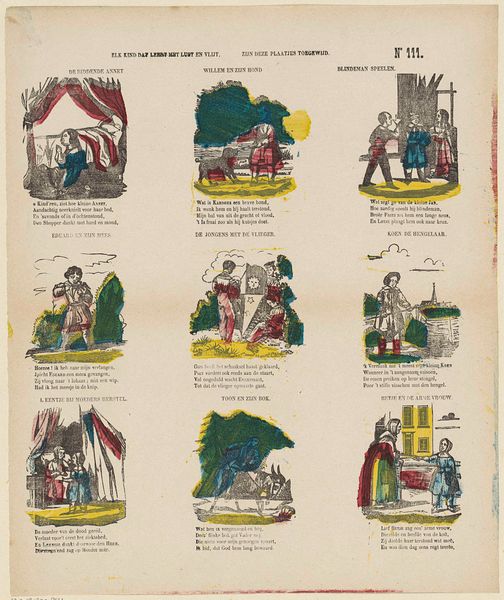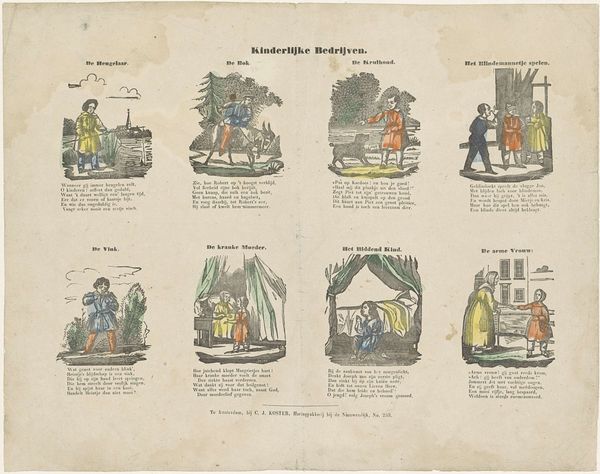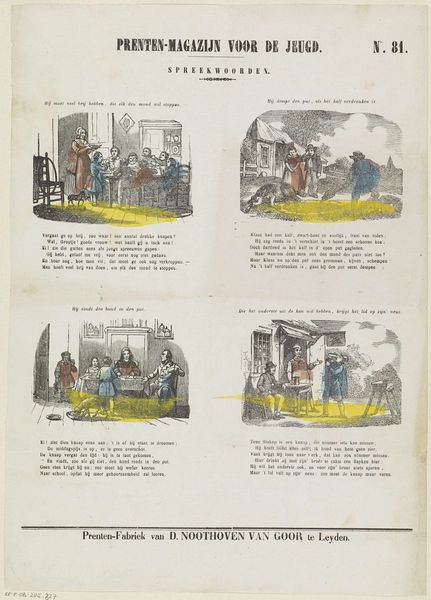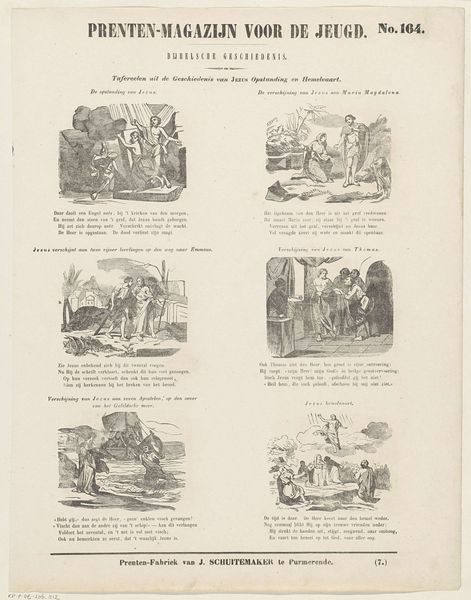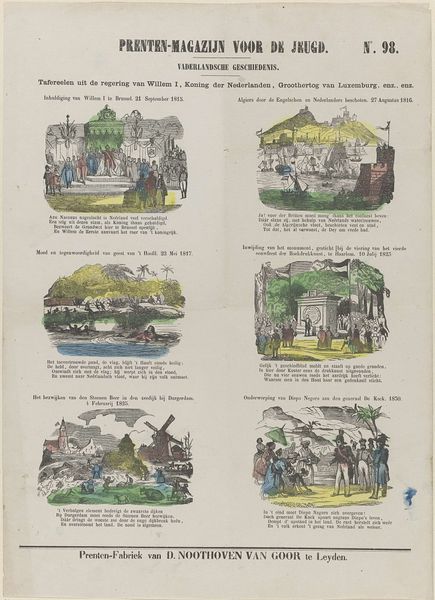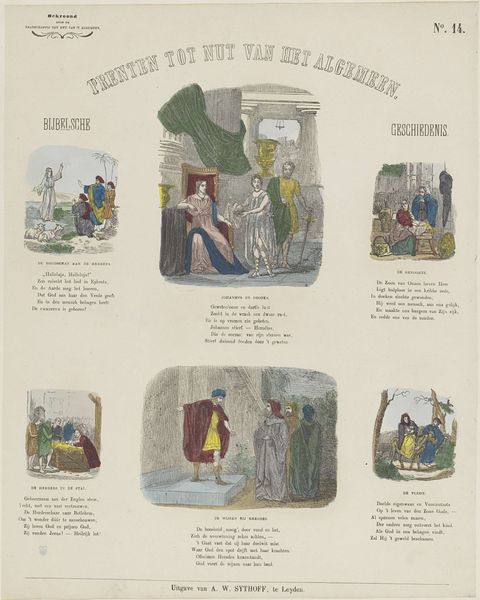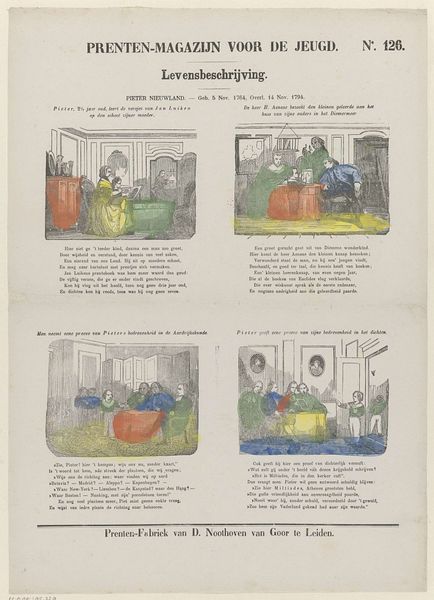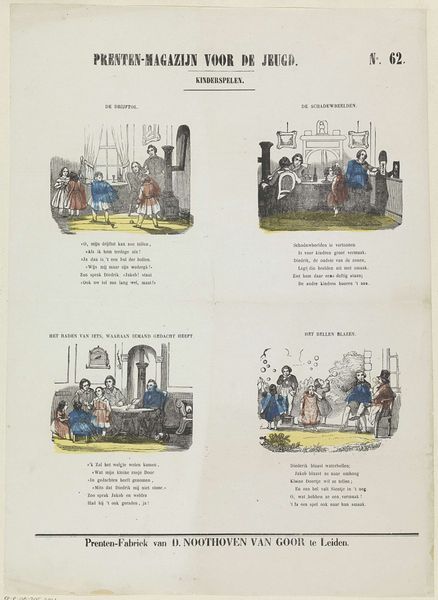
graphic-art, lithograph, print, engraving
#
graphic-art
#
narrative-art
#
dutch-golden-age
#
lithograph
# print
#
history-painting
#
engraving
Dimensions: height 419 mm, width 344 mm
Copyright: Rijks Museum: Open Domain
Editor: This print from 1850 by Jan Schuitemaker is titled "Voorstellingen uit het leven van Prins Maurits", showcasing scenes from the life of Prince Maurice. It seems to be a series of historical vignettes, almost like a comic strip. What kind of narrative do you think this print is trying to convey? Curator: It’s a fascinating example of how historical narratives are shaped and disseminated, especially for younger audiences. Consider the context: mid-19th century, a period of burgeoning national identity in the Netherlands. Schuitemaker's print, part of a "Picture-Magazine for Youth," isn’t just illustrating events; it’s constructing a specific image of Dutch history and Prince Maurice’s role in it. What message about Dutch identity do you think it might be sending? Editor: I guess it is about national pride, emphasizing key victories and acts of heroism, kind of simplifying and idealizing the past. It's presenting a specific version of Dutch history, one focusing on military successes, especially those scenes which feature the Prince Maurice. Is it trying to downplay the complexities of the time? Curator: Precisely! And it’s doing so through imagery and simplified narratives suitable for children. Notice the scenes chosen and how they are framed. Each vignette reinforces the narrative of Dutch courage and ingenuity against foreign powers. Think about how the use of a print medium also made this narrative readily accessible and widely distributable, effectively shaping popular historical understanding. Also, how might these images function in the home or classroom? Editor: So, the image serves a dual purpose: to educate children about their history and to instill a sense of national identity and pride. That’s very interesting how images were consciously employed to shape collective memory. I hadn’t considered how influential prints like these could be. Curator: Indeed. It's a reminder that historical art isn’t merely a reflection of the past, but an active participant in shaping how that past is understood and remembered, especially within the broader socio-political landscape. It’s about the politics of imagery.
Comments
No comments
Be the first to comment and join the conversation on the ultimate creative platform.
